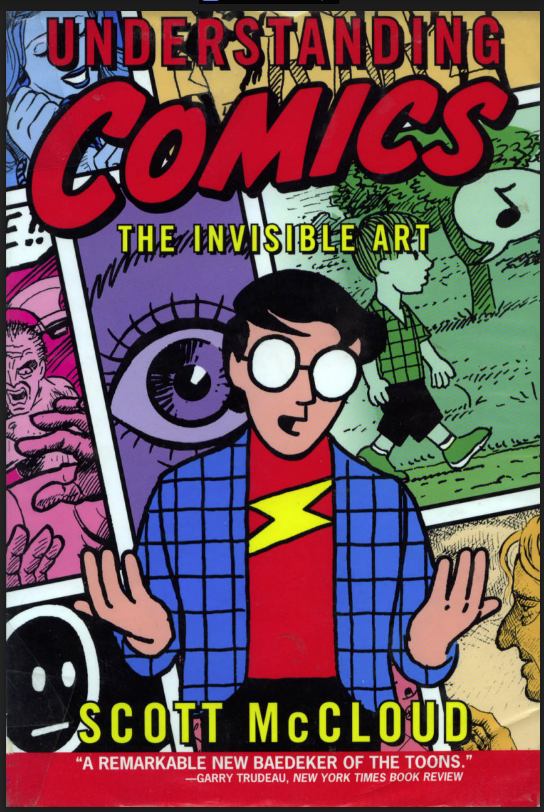Our course text is Understanding Comics By Scott McCloud. It is a comic book about comic books. McCloud, in an incredibly accessible style, explains the details of how comics work: how they’re composed, read, and understood.
Chapter 3 – Blood in the Gutter – pp. 60
- In comics, what is “the gutter?”
- Discuss the concept of closure as it relates to comics.
- Of the six types of transitions in comics, choose one that you find most interesting and tell why.
- What’s the point of the three stories about Carl that are shown on pages 84-85?
Chapter 4 – Time Frames – pp. 94
- Is each frame in a comic a single moment in time? Why or why not?
- How does adding words change the length/time of a panel?
- In comics, time and space are “one and the same.” How so?
- On page 101, how does changing a panel’s shape affect its time?
- In comics, motion is usually reduced to what?





A gutter is the space between panels.
Closure in comics allows readers to connect time and motion. It also fosters an intimacy surpassed only by the written word, a silent, secret contract between creator and audience.
Scene-To-Scene is most interesting to me because I enjoy how it makes the scenes appear as if there was a time skip in the moment. It makes me wonder how much time has pass between the scenes.
The point of the three stories about Carl is to show us the difference between a long story and short story. It helps us understand why it is important to find balance between too much and too little.
Yes, because the frames contains actions that causes our eyes to constantly move in order to catch the moment.
Adding words changes the length/time of a panel by causing it to gain a single moment.
They are “one and the same” because they leave readers with a vague sense that causes their eyes to appear as if they are moving through both space and time.
Changing a panel’s shape can affect time by applying a “pause” to the scene, controlling the time within the scene.
Motion is usually reduced to closure, mostly by the transition types one, moment-to-moment and two, action-to-action.
Exactly! Good Reading Kiana!